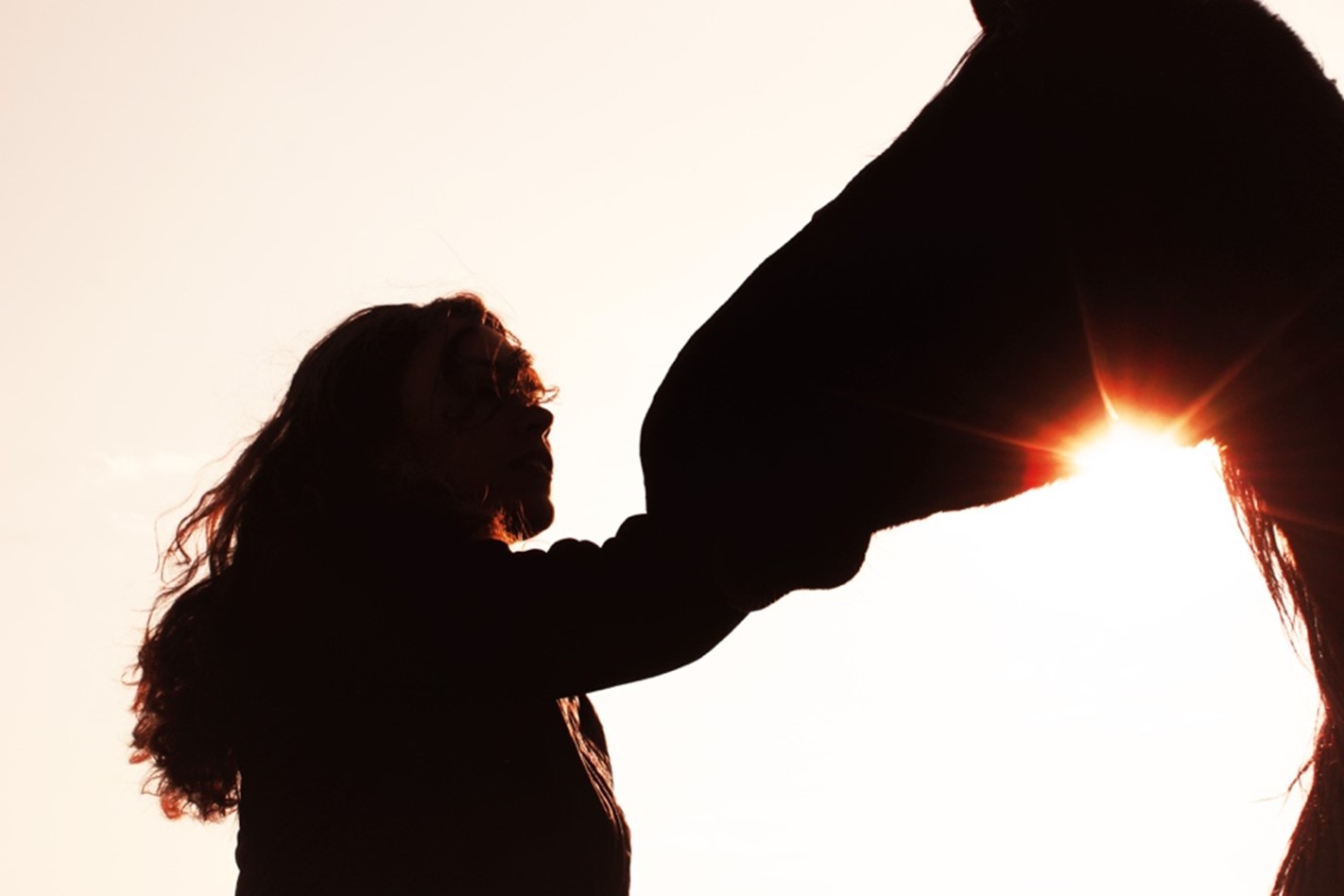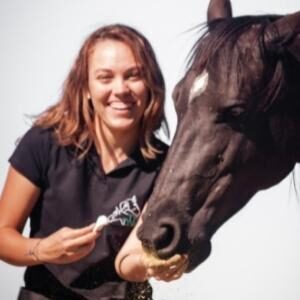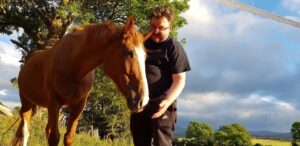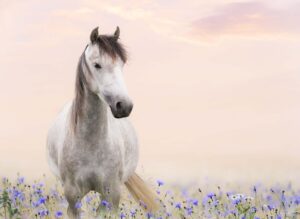Every horse lover is taught early on in their horsemanship journey that trust is the foundation of a good relationship with their horse, but how do you attain that trust? Is trust something that is built over time, or can we attain it in just one or two training sessions? Furthermore, is trust dependent on respect and leadership? And then an even bigger question arises when we start discussing this topic, namely, if a horse cooperates, does that mean he trusts us?
Exploring the leadership and trust link
The longer you’ve been on your horsemanship journey, the more you’ve likely seen different ways in which “trust” has supposedly been created between horse and human. Many previous methods have explored the importance of showing leadership to the horse, and once you have established yourself as the leader, you then start building trust with that horse. This idea came from the leadership theory involving the lead or alpha mare, in which it was thought that there was one dominant horse (usually a mare) in the herd, who was the leader. She attained that leadership position by moving the other horses’ feet and standing her ground if she wanted food or water, in which case the other horses would move away and let her eat or drink. She would assert her authority and demand respect which established her as the leader, and the herd would follow her because of it. When the leadership position is challenged by another horse, the strongest and most aggressive one usually gains the title. Once leadership was established, trust was thought to follow or accompany it. This also intertwines with the idea of a linear herd hierarchy, where each horse has his or her place in the herd, some are followers, and others are leaders, each horse with a rank within the herd. This is how we also learned to attain trust within training, by being the leader through moving our horses’ feet and standing our ground, asserting authority and demanding respect while not being pushed around by them, in which case they would gain the leadership position.
The leadership theory was disproved by ethologists over the years and in her book ‘Horses in Company’, Lucy Rees describes how there are no fixed leaders in feral equine herds and no dominance hierarchies. The aggressive behaviour commonly seen amongst horses has little to do with leadership and respect, and much more with domestication and the stress associated with it, including limited food supply, limited space, and social isolation to name a few. Something like food competition changes social relations within a herd, and horses learn to become more aggressive. The hierarchies and “lead” horses are created because of abnormally high aggressive behaviour and changed social structures due to domestication and stressful environments. Lucy observed that within the most feral equine herds the horses would not have fixed leaders, and would show very little aggressive behaviour towards one another, instead, she observed how any horse could suggest a change and if that horse was confident and purposeful in that decision (for example walking to the water), the other horses would follow and synchronise. She, therefore, noted that there are temporary leaders within different situations, but no fixed leaders and no dominance that lead to leadership. Through these observations, it becomes clear that trust cannot be attained through being the leader over the horse as previously described by the leadership theory, and it cannot be attained by moving the horse’s feet.
The next concept that we need to discuss is not that of leading, but that of following. Often, it’s assumed that when a horse follows a trainer around there is trust between the trainer and the horse, while in the meantime this behaviour may simply occur because it has been unintentionally taught through negative reinforcement. Horses are extremely observant, and they often seek the path with the least aversive stimuli, so they quickly learn what to do in order to get aversive stimuli removed. The aggressive behaviour between horses is a great example of this; if one horse starts biting the other around food, the second horse will either leave the food (thus getting rid of the aversive stimuli, which is the pain of the biting), or bite back, in which case the fight will continue until one horse retreats, in which case the aversive had become too great for that horse. The same applies to training and activities that seem to build “trust” in a single session. In such training activities, the horse observes and learns when the aversive (such as being chased around) stops or reduces in intensity, and then he will start to do more of the behaviour that reduced the aversive. It might start with the horse just looking at the trainer and the trainer then dropping the whip or rope when the horse does so, and through trial and error, the behaviour builds until the horse eventually follows the trainer around since that’s the behaviour that the horse learns, over time, makes the aversive go away. This is basic negative reinforcement training and has little to do with trust, and is simply a learned behaviour, the same as a horse learning to lead by using the addition and removal of pressure.
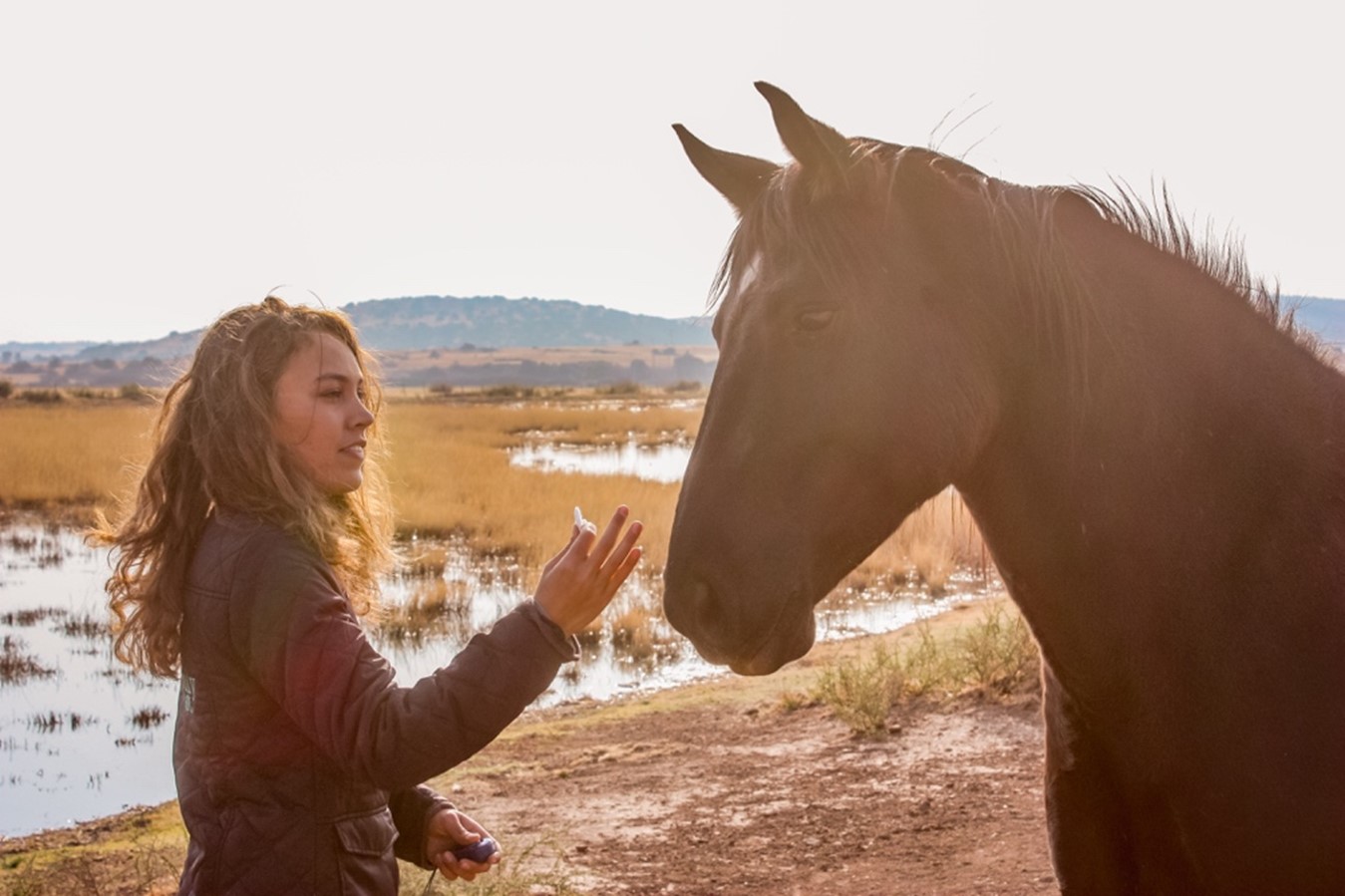
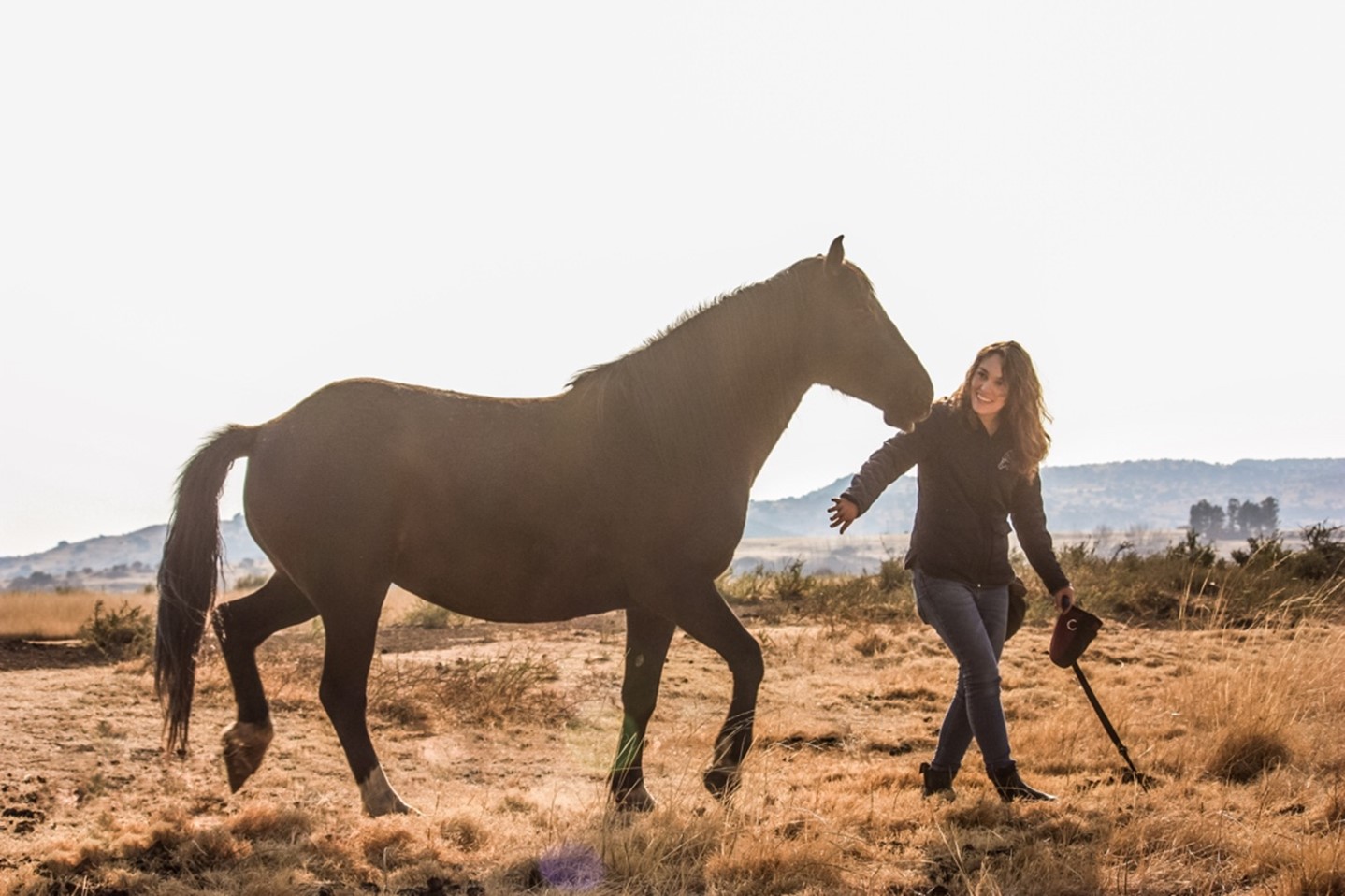
Exploring the pillars of a trusting relationship
Susan Friedman and Steve Martin describe trust as a level of certainty that the interaction will result in good outcomes, and Psychology today writes that trust is a feeling of confidence and security, but has to involve the individual experiencing positive emotions towards the other individual. Furthermore, we can look to Lucy’s research and observations again and learn from the feral equine herds. In her book, we read how herd members are autonomous individuals, they suggest change, they don’t demand it from each other and are not naturally dominant over each other. We thus see that trust cannot be demanded, and it cannot be created when the horse is stressed or experiencing aversive emotions. These are emotions such as panic (often arising from social isolation), fear (often arising when the individual feels in danger) or anger (this can be associated with frustration and lack of communication). From here, we can start to explore the true pillars of trust and how we can implement them in our daily interaction with our horses.
Consistency and predictability
The first part of building true trust with your horse is through consistent and predictable behaviour. Our horse needs to know what to expect from us and can only know that if our behaviour is consistent and predictable, as well as the training. Behaviour from us, such as chasing the horse around, suddenly jumping on their back, flapping a plastic bag around without warning etc., are all unpredictable behaviours which cause the horse to lose trust in the trainer or owner. Unexpected and sudden behaviours from us are often included when a horse is desensitized within training and is thought to bombproof the horse, but instead, it can create a horse who is on high alert when it comes to humans not knowing what to expect and when. A better approach is to slowly build the horse’s confidence, which can be done simply by helping the horse understand his environment and by letting him experience positive outcomes within various situations.
Two-way communication
Communication is vital to a trusting relationship with your horse, but this has to be two-way, clear communication. We as owners and or trainers have to learn how to communicate with the horse in a way that he understands well; most often, the communication has to be something we train first. Because we are different species, we often don’t understand the other one’s language, we have to learn about the horse’s body language, and we have to train with the horse in order to establish a line of communication. In most training, this communication is done through pressure and release, but the horse doesn’t understand the meaning of pressure at first and has to learn how communication works. During this foundation phase, it’s important to stay calm and not expect a lot at first, it’s also important not to apply too much pressure to make the process faster since pressure is an aversive stimulus and can easily arouse fear emotion. Another way of communicating with our horses is through a clicker and a reward, and through this manner of communicating and training, we can tell the horse precisely which behaviours and movements we want and the intensity of it. In my experience, it’s a much easier and more positive process to establish communication through the use of a clicker, and the ways in which we can communicate with the horse is vaster. Our communication with our horse should be done in a way he or she understands clearly in order to reduce any frustration, which can lead to the horse experiencing aversive emotions and being less curious during training.
Not only do we have to be aware of how we communicate with our horse, but we also have to give the horse an opportunity to communicate with us, and we have to respond appropriately. This is where choice comes in. A large benefit of positive reinforcement training is having the opportunity to give the horse choice within training, which greatly promotes the trusting relationship. This is often done by training start and stop buttons which the horse learns to use, and it serves as a very valuable communication tool. When the horse is uncertain, unsure or even stressed, he or she can communicate this to us. When we respond appropriately to this communication by making the situation more positive or reducing stress and aversive stimuli, the trust builds further. This leads to a horse who communicates fears to us through body language and trained behaviours, which gives us the opportunity to help them overcome those fears. Giving horses the opportunity to communicate also often gives them more control over situations, which can also help reduce and avoid explosive reactions since many anxious and aggressive behaviours can be linked to a horse feeling overwhelmed and threatened due to a lack of control. By opening this line of communication, we’re building a more trusting and willing relationship with the horse.
Safety and Positive outcomes
This pillar of trust is one that is probably the most important but also ties in so well with the others. When a horse doesn’t feel safe, he can’t trust us. As mentioned previously, positive emotions are directly linked to trust, and once aversive emotions rise, positive emotions fall. Because horses are prey animals, they can easily feel unsafe, especially when something causes them to feel socially isolated or fearful of losing their life. Safety thus has a lot to do with the environment we create. When we train, we must be aware of how safe our horses feel, we have to train them in such a way that they become more confident and are able to handle different situations. Throwing them in the deep end and letting them cope with stressful situations without understanding it and without being trained for it will damage the relationship we have with our horses because they don’t feel safe around us.
This is also where positive outcomes play a large role. The experiences the horse has, and the outcomes the horse expects, influence the associations he makes with his surroundings, with training and with the owner. When there are consistent positive interactions and outcomes, the horse will start to associate you with positive outcomes, and if there is a consistent negative interaction, the horse will start to associate you with negative outcomes. As said before, trust is a level of certainty the horse has that the interaction with you will result in good and positive outcomes.
All the pillars of trust are intertwined so beautifully. Our horses have to have positive interactions with us, and they have to expect positive outcomes from interacting with us in order to trust us. But in order to expect or predict positive outcomes, they have to have had a history of consistent behaviour from us and predictable training. And in order for the interaction to be positive, the horse has to have a way to communicate with us and has to feel safe. So you see, in order to build a truly trusting relationship with our horses, it’s important that within every interaction with our horse, we aim to make our equine partner feel safe, have a voice and have plenty of positive experiences.
If you enjoyed this article, we recommend checking out Louisa’s course Overcoming Behavioural Challenges.
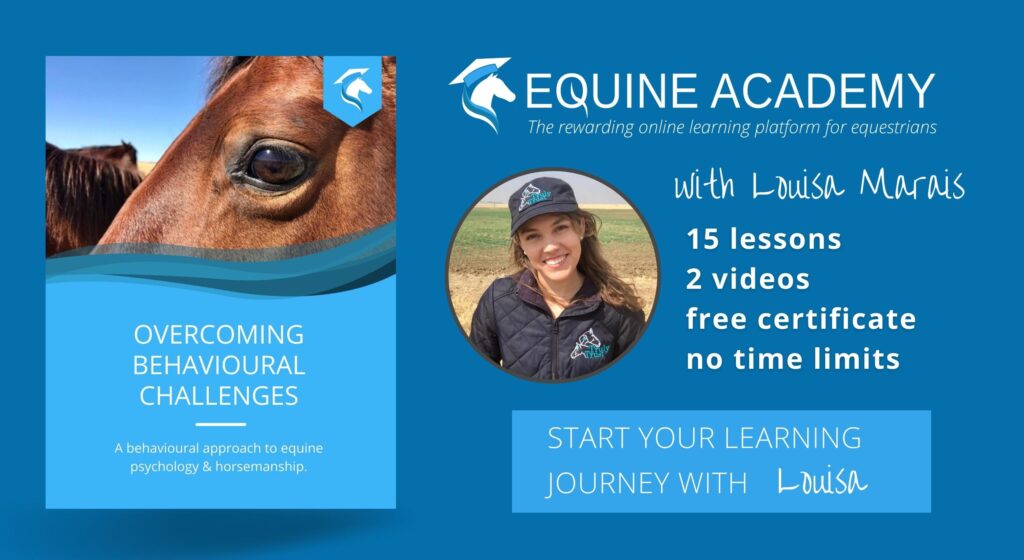
This article first appears in the EA Journal in February 2022 – Get your free copy of the latest issue


